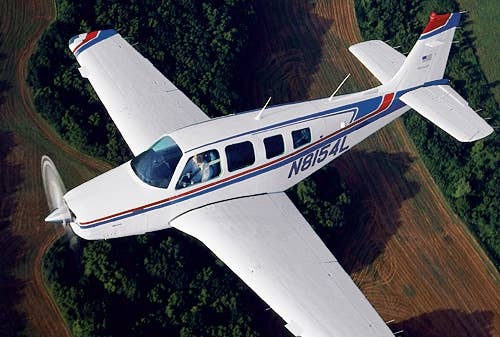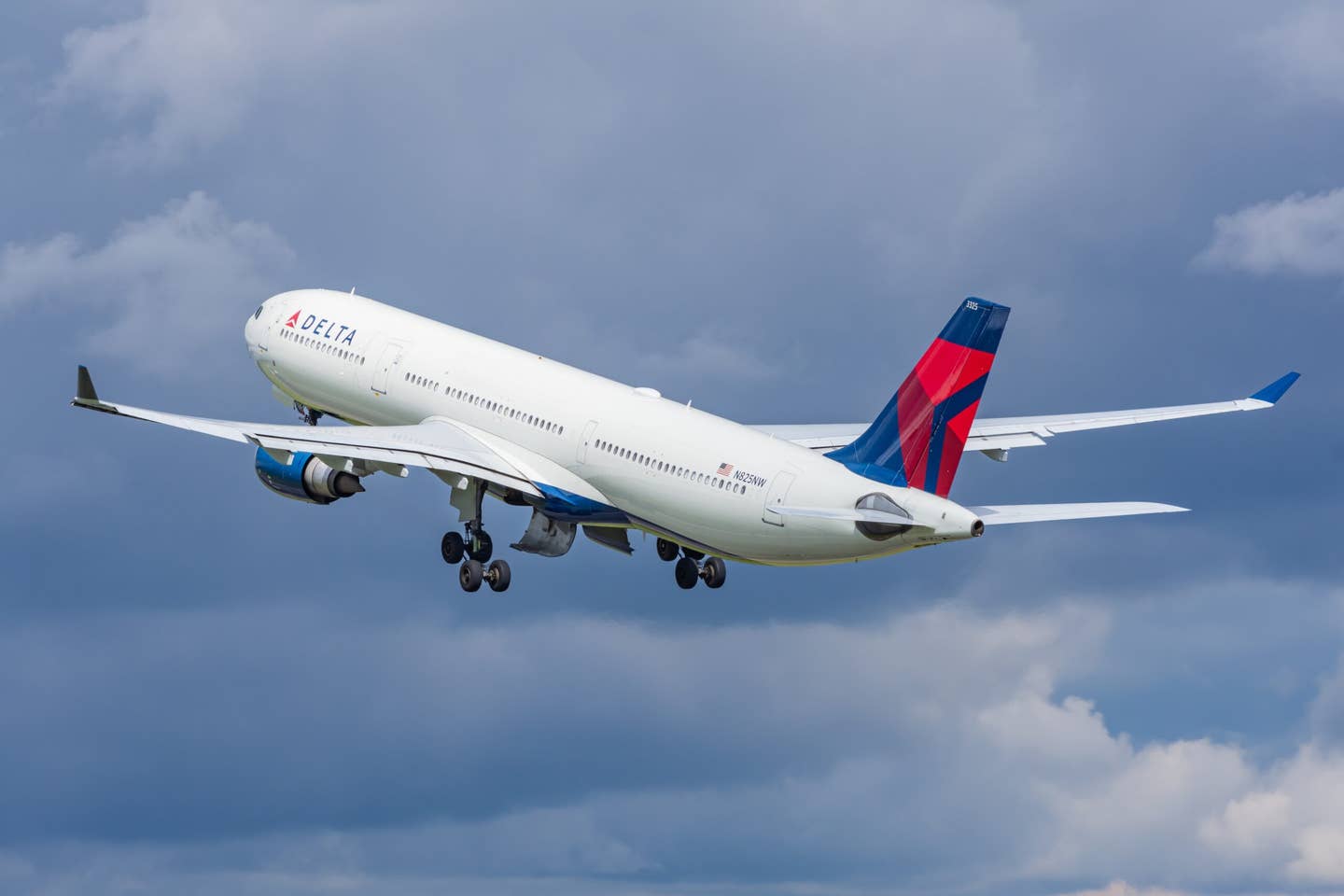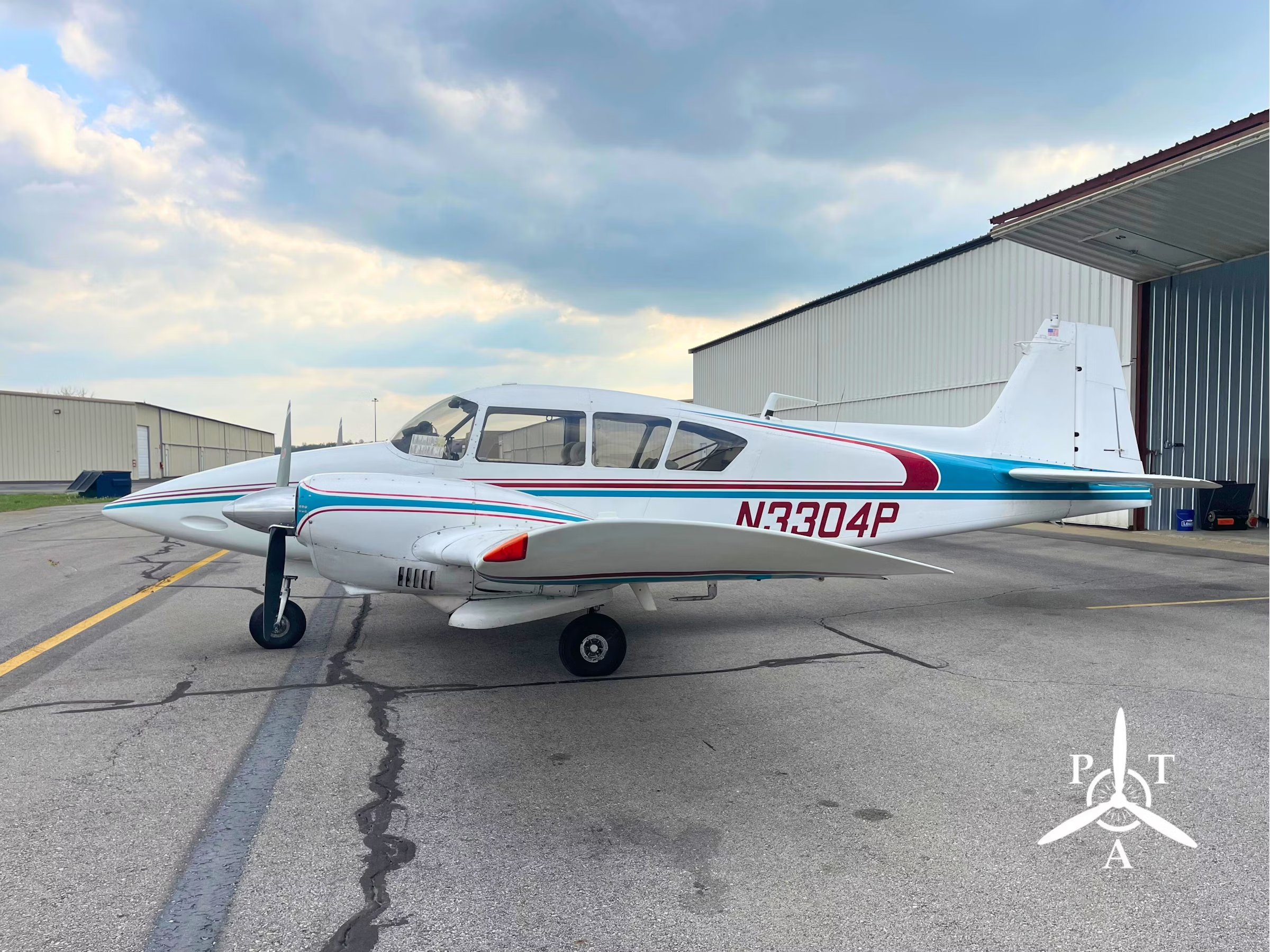
Beech A36 Bonanza Nigel Moll
The turmoil that has consumed the world's economy has certainly spread to aviation. And like investors, pilots are all looking for an airplane that can carry them through the unpredictable months and years ahead. The so-called flight to quality that sends money flowing into the most reliable and conservative investments also applies to pilots, and I think the Beech A36 Bonanza is the airplane that is best to fly through the economic turbulence.
Why the Bonanza when it is not necessarily the fastest, lowest cost or most fuel-efficient airplane in the category?
First, when you are looking for maximum security in investments or airplanes you find it by examining history. The A36 has a record of 40 years of continuous production, longer than any general aviation model that I can think of. I believe that the Boeing 737 claims a longer unbroken production streak, but unlike the A36, the current crop of 737s are barely recognizable as direct descendents of the original.
The past four decades have seen several big swings in both the aviation and overall economy. The A36 was born into a general aviation slump in 1968 that lasted into the early 1970s. It then soared along with all other airplanes during the boom years of the late 1970s when total general aviation production peaked at nearly 18,000 airplanes in 1979. Then the bottom fell out in the 1980s and many of us wondered whether the light airplane business was finished. The A36 persevered into the 1990s when we all thought that product liability costs would end all new airplane production. After the liability limitation law was passed the A36 succeeded along with the rest of general aviation, only to face the slump following 9/11. The A36 and aviation rebounded again, but now faces the current crisis with an unknown future.
The point of this discussion is that we know what happens to demand for A36 Bonanzas when the boom goes bust. The Bonanza rides the wave both up and down, but it has the qualities enough pilots want to come out the other side of the downturn.
The 40-year track record of the A36 also proves that there are no surprises left in the airplane itself. It was actually a proven design when the first were delivered in 1968 because it is a stretched version of the original Bonanza that already had 21 years of service in the books when the A36 was launched.
Many pilots believe that Beech simply stretched the Model 35 V-tail Bonanza fuselage to create the A36, but that's not quite true. The A36 fuselage and cabin is about eight inches longer than the original, but the extra length is divided about evenly ahead of and aft of the wing. If you look closely you will see that there is more room between the leading edge of the wing on the A36 and the aft edge of the cowling than there is on a Model 35 or 33 Bonanza. This A36 design kept the airplane in balance to deliver excellent flying qualities, and also to move the empty center of gravity further forward compared to the shorter Bonanzas. Anybody who has flown and owned a Model 35 or 33 knows how important and useful a few inches of forward CG can be.
The A36 design and construction were entirely conventional in 1968, and the durability and repairability of the airframe are among its most important qualities. And the fact that it remains in production today takes the question of whether spare parts for a used A36 will be available off of the table.
And perhaps most importantly under these economic conditions, the 40 years of A36 production means that used airplanes are available at almost any price point.
Used airplane value predictions -- just like the price of any other durable item such as a house -- are made based on recent sales of comparable airplanes. When the market turns crazy like it has for airplanes, or houses, comparables can become hard to find, so accurate estimates of any individual airplane's value are suspect. But, with such a range of A36s available, I think it's safe to say you can find one for any price ranging from somewhere around $50,000 for an airplane in need of work all the way up to the $500,000 or so a nearly new airplane can bring.
I think the enduring appeal of the A36 Bonanza results from its cabin comfort, flying qualities and performance, in that order.
Cabin comfort is subjective, of course, but there are few pilots I have ever met that don't agree that the A36 offers comfort. My personal belief is that it is the cabin height that is most appealing. The A36 is not as wide as some other singles, but even tall pilots can sit upright on comfortable chairs with their feet flat on the floor when they don't need the rudder pedals. Huge windows surround the pilot and wrap up into the overhead to provide even more light and visibility. Nothing improves the sense of spaciousness more than big windows and great visibility. And the vibration and sound levels in the cabin of an A36 are as good as any piston single, and better than many.
There is also the cabin convenience of six seats. Few A36 owners ever fly with a body in each of the six seats, but that option is always available. More importantly, and something you will use on every trip, are the big double doors accessing the aft cabin. It's so easy and convenient to open those doors and load anything from luggage to oversize items. I can count on the fingers of both hands how many times I have had four people in the back of my airplane, but there are many, many more times when stuff that would have been a problem to carry in a typical four-seater fit easily through those doors. Whether it's golf clubs, hanging bags or even a big framed picture you need to carry, it fits easily in the back. And you can pull a couple of quick release pins and remove the rear seats to create a flat floor in the aft cabin to haul really bulky items.
The earliest A36 Bonanzas were delivered with all six seats facing forward, but most were built with the club seat option that has the middle row of seats facing aft. However, it is possible in most club-configured airplanes to reverse the center row and have it face forward, if you ever wanted to. When our kids used to fly with us they used the club configuration as a left and right flop and stretch arrangement. They would pile stuff on the floor and then lay across the bottoms of both seats. When you have four adults on board, many find it comfortable to sit on the left and right side and stretch their feet up onto the chair ahead. Whether you are hauling people or stuff, you just can't beat the ease of use and comfort of the A36 aft cabin and its big doors.
The flying qualities of the A36 are legendary for excellent harmony of forces and smooth response. The short V-tail and Model 33 Bonanzas may have slightly lighter control force, but the A36 more than makes up for that with enhanced pitch stability. The longer fuselage length and big horizontal tail provide very precise pitch control that lends itself to smooth and predictable approaches and landings, not to mention lower workload when hand flying. If you are flying by yourself with plenty of fuel, the CG will be pretty far forward and the stick force in the landing flare with flaps down can be a little high, but if you use your thumb on the pitch trim switch and roll in nose up as you reduce power to land, it works perfectly.
Beech changed to a 28-volt electrical system in the late 1970s and that made everything better, from easier engine starts to more power for lights and accessories, and very importantly allowed higher landing gear and flap extension speeds. That may not be enough to woo you away from a very well-maintained earlier A36, but be sure to check out the electrical system and limit speeds when shopping.
Another very important flying quality of the A36 is its ability to handle shorter runways and strong winds. We have often used Bonanzas with the rear doors removed as photo platforms so the photographer can shoot without the distortion of windows. It's perfectly legal to fly with the back doors off. I and other Flying magazine pilots have been amazed by how the A36 will run away from most other, often more powerful or faster airplanes, on takeoff and initial climb as we try to maintain formation. I'm not sure exactly why that is true, but Beech has gotten the propeller and wing combination just right. The A36 has its runway limits just like any airplane, but in the high performance category of piston singles it does a great job in and out of shorter runways. Its fat tires and good propeller clearance also allow the A36 to comfortably use sod or other unimproved runways. The rugged air-over-oil landing gear struts absorb the runway's lumps and bumps, and there is plenty of clearance for the gear doors so they won't snag as they can on some airplanes.
For much of its production life the A36 was tied for the lead in piston single cruise speed, but now other more powerful airplanes or turbocharged models have passed it. However, the 165 to 170 knot typical cruise speed remains usefully fast on acceptable fuel flows. The old rule of thumb was 15 gallons per hour to true around 170 knots, and that still works today. Lean of peak operation knocks a few knots off of that cruise speed but can reduce fuel flow by two or three gallons per hour.
Pilots who can no longer justify the operating costs of a twin, or even a turboprop, can live with 170-knot cruise. Yes, you will miss the extra knots but the operating economics of the Bonanza will make it easier to accept. And the comfort of your surroundings and the pure pleasure of the flying qualities make time spent in a Bonanza more joy than drudgery. And for a pilot moving up from a more basic single, the Bonanza has proven that its cruise speed has satisfied generations of pilots.
Most pilots do -- or at least should -- think of the A36 as a five-hour airplane to dry tanks. That means you should plan to stay in the air no more than four hours. For most of us four hours is more than enough between breaks to stretch and hit the head. But there are still many pilots who cherish the nonstop above all else, and the A36 can deliver with a range of optional aftermarket tip tanks. Depending on which set of tanks you choose, you can stretch your sit time to seven hours or more.
When shopping for a used A36 all of the usual caveats apply. Be sure to have the airplane examined by a knowledgeable Beech mechanic. You don't necessarily need to buy a perfect airplane, you just need to know what you are buying and how much immediate maintenance investment to expect. The airframe itself is very straightforward with few problems that aren't obvious. The landing gear does require correct rigging, and parts can wear over time so that system deserves special attention.
The Continental IO-520 and 550 engines that power the A36 are efficient and smooth running and can have very long lives, or not. Most engine maintenance issues involve cylinder or valve wear and those are usually easy to find with a basic pre-purchase inspection. Years ago there were some issues with engine crankcase cracking, but most of those older design crankcases should have worked their way out of the fleet by now.
If the engine on an A36 you are considering is due for replacement it can be very cost effective to upgrade from the original IO-520 rated at 285 horsepower to the 300 hp IO-550. The engines are nearly identical externally so the 550 fits right into the 520 space with the most minor of modifications. Continental offers trade-in credit on a 520 for a factory rebuilt or factory new 550 so there is little cost difference when replacing the engine. Not all propellers approved for use with the 520 can be used on the 550, so be sure to check that out. However, the new Hartzell propellers are considerably better in performance and durability so a change to the Top Prop is valuable in any event. The 550, particularly with a new Hartzell three-blade, will give you a few more knots speed for a little more fuel, plus better takeoff and initial climb. And, subjectively, I think the 550 runs just a tad smoother.
But back to the flight to quality and our economic concerns. Will the A36 hold its value? Can I get my money back for new engine and avionics? All I can say is that nobody knows. But what I am certain of is that the A36 is the most tested and proven choice you can make in a used single today. And that is worth a lot..

Sign-up for newsletters & special offers!
Get the latest FLYING stories & special offers delivered directly to your inbox






